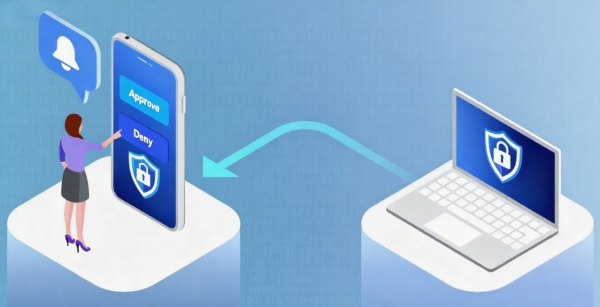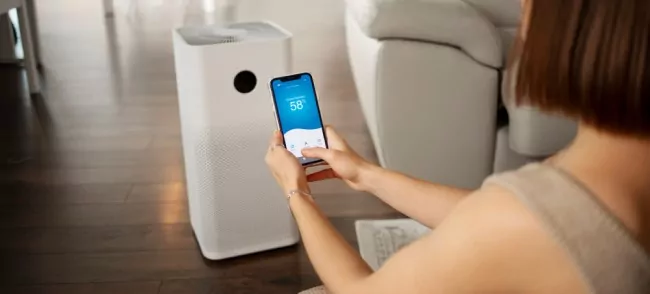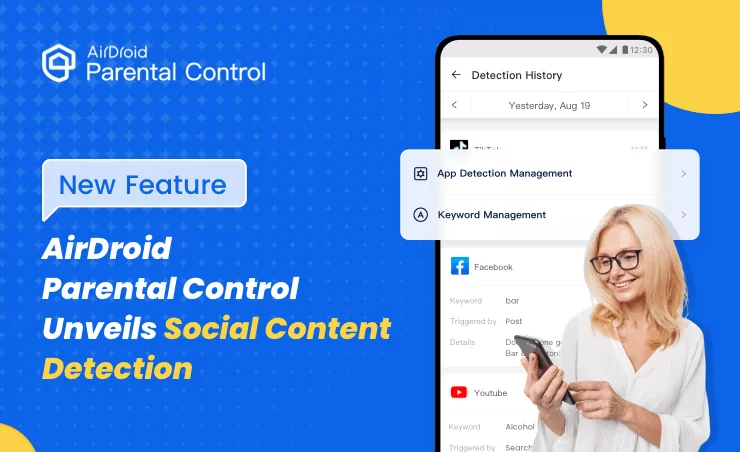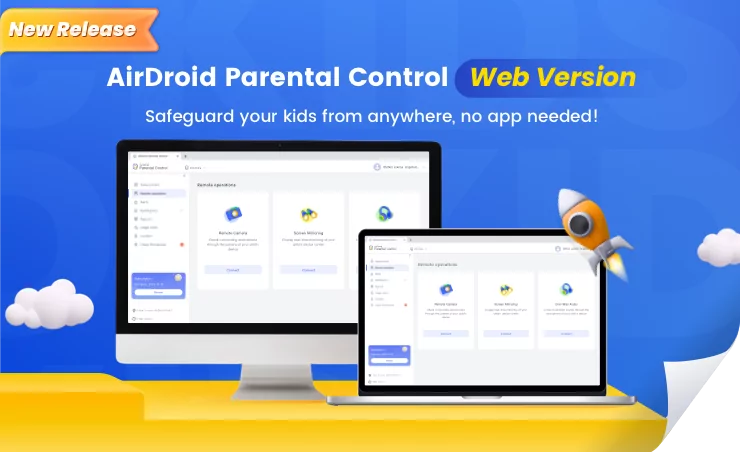Best Practices for Securing Unattended Access: Encryption & Authentication
Unattended access helps businesses be more efficient and productive, especially if they've deployed devices and need support remotely. But it's only effective if you have secure unattended access.
The tool is supposed to make your jobs easier, not turn things into an open invitation for people with bad intentions. However, without proper security, that’s exactly what happens.
With problems like data breaches, unauthorized control, policy violations, and so much more, you end up not managing devices but managing damage.
Luckily, these situations are avoidable. Let’s look at how you can lock down your unattended access setup. No more crossing fingers and hoping hackers don't notice your devices. You can implement bulletproof security that actually works in the real world.

IBest Practices to Secure Unattended Access
Securing unattended access is like building a fortress. Multiple layers of defence need to work together as one weak link can cause the whole thing to fall apart. Here's your complete security playbook.
Data Security as the First Line of Defense
Attackers want your data. Everything else is just a pathway to that end. That's why data protection should be your priority number one.
First, always use secure file transfer protocols when accessing devices remotely. We're talking SFTP, HTTPS, or encrypted channels only. Old-school FTP connections send your files in plain text for anyone to read, sort of like shouting your credit card number across a crowded room.
Next, protect against data exfiltration with built-in DLP (Data Loss Prevention). DLP systems actively monitor what data moves in and out of your devices. They can spot when someone tries to copy sensitive files or send confidential information where it shouldn't go. It’ll almost act as your digital bouncer who knows exactly who belongs and who doesn't.
Finally, sensitive files should be stored securely, and data exposure should be limited. Don't leave important documents sitting in obvious folders where any remote session can stumble across them. Use encrypted storage, proper file permissions, and the principle of least privilege. Only show what people absolutely need to see.
Privacy Mode for Remote Access
Privacy mode lets you black out the screen and block mouse and keyboard access during remote sessions, creating a completely invisible workspace.
Imagine you're fixing someone's computer in a busy office. Without privacy mode, everyone walking by can see exactly what you're doing. Customer data, internal systems, confidential emails. Everything is on display like a public movie screening.
This feature masks sensitive user activities while IT is fixing issues. Your users don't want their coworkers seeing their browser history or personal files when you're troubleshooting. Privacy mode creates a professional boundary that protects everyone involved.
It also prevents visual snooping in shared offices or public environments. When privacy mode is activated, the remote screen becomes darkened and the device is temporarily blocked, making shoulder surfing impossible. Coffee shops, coworking spaces, and open offices all become secure workspaces when nobody can see what you're working on.
Strict Access Permission Control
Access control isn't about being restrictive. It's about being smart with who gets what level of access.
- Grant only necessary access: Your marketing team doesn't need admin rights to the entire network. Your sales team doesn't need access to development servers. Give people exactly what they need to do their jobs, and nothing more.
- Role-based access: Create access profiles based on job functions. All your graphic designers get the same level of access to design software and shared folders, and all your accountants get access to financial systems. Management becomes much easier and reduces security gaps.
- Multi-factor authentication (MFA) for remote sessions: Even if you’ve set a password for unattended access in your security settings, passwords alone aren't enough anymore. Add MFA to create multiple checkpoints. Even if someone gets your password, they still need your phone or authenticator app to get in.
Unattended Access Logs & Monitoring
Logs are your security team's best friend. They tell the story of everything that happened when you weren't watching.
- Why audit trails matter for accountability: When something goes wrong, logs help you figure out exactly what happened and who was involved. They're also crucial for compliance requirements and internal investigations.
- What to log: Track login attempts (both successful and failed), session duration, data transfer activities, and system changes. Don't just log the basics, either. Make sure to record file access, command execution, and network connections too.
- Using logs for compliance: GDPR, HIPAA, and ISO 27001 all require detailed activity logging. Your logs become proof that you're following security protocols and protecting sensitive data properly.
- Proactive alerts for suspicious activities: Set up automated alerts for unusual patterns, such as multiple failed login attempts, access from new locations, large data transfers, or sessions at weird hours. Let the system watch for red flags so you don't have to.
End-to-End Encryption for Remote Sessions
Encryption isn't optional anymore. It's the foundation that everything else builds on.
Encryption prevents session hijacking and data interception. Without it, your remote sessions are like having a phone conversation on speaker in a crowded room. Anyone with the right tools can listen in and capture everything you're saying or doing.
TLS/SSL and AES standards work together to create secure tunnels for your data. TLS/SSL is the secure pathway that your information travels through, while AES is the lock that scrambles your data so only authorized parties can understand it. Current best practice is TLS 1.3 with AES-256 encryption.
Make sure encryption covers both control commands and data streams. It's not enough to encrypt the files you transfer. Every mouse click, keyboard input, and screen update needs protection too. If attackers can see your keystrokes, they can capture passwords and sensitive information even if the files themselves are encrypted.
IIThe Risk of Unsecured Unattended Access
Let's talk about what happens when you skip the security measures.
Common Attack Vectors
Weak user sign-in credentials are the most important vulnerability in remote access systems. Attackers use automated tools to guess passwords, especially when people reuse the same credentials across multiple systems.
Man-in-the-middle attacks target unencrypted sessions. Hackers position themselves between your device and the target system, intercepting everything that passes through. Weak login credentials and reused passwords increase the likelihood of captured data and brute force attacks.
Insider threats are harder to spot but just as dangerous. Employees with legitimate access can abuse their privileges to steal data or cause damage. And without proper monitoring and access controls, these attacks can go unnoticed for months.
Real-World Consequences
Data breaches aren't just headlines. They're business killers. Personal devices often lack enterprise-grade security controls, increasing the risk of data leakage and unauthorized access. A single compromised session can expose customer databases, financial records, or intellectual property.
Regulatory fines hit hard and fast. GDPR violations can cost up to 4% of annual revenue. HIPAA penalties start at $50,000 per incident. These aren't just slaps on the wrist but business-threatening financial hits.
Reputation damage lasts longer than any fine. Customers lose trust when their data gets stolen, partners question your reliability, and competitors use your security failures as selling points against you. Recovery takes years, if it happens at all.
Key Industries at Higher Risk
Healthcare organizations handle patient data that's incredibly valuable to cybercriminals. HIPAA compliance isn't optional, and remote access security directly impacts patient privacy and safety.
Financial services deal with money and personal information. Banking regulations are strict, and security breaches can trigger immediate regulatory investigations and massive fines.
Manufacturing companies often have IoT devices and industrial control systems connected remotely. These systems control physical processes, making security failures potentially dangerous to both people and equipment.
Educational institutions store student records, research data, and financial information. They're frequent targets because they often have limited security budgets but valuable data.
The bottom line? Secure unattended access isn't just about following best practices. It's about protecting your business, your customers, and your future. Get it right, and remote access becomes your competitive advantage. Get it wrong, and you're managing damage instead of growing your business.












Leave a Reply.